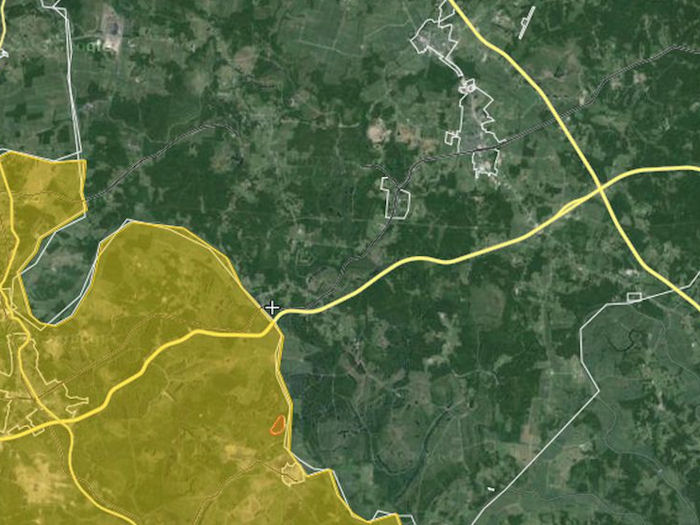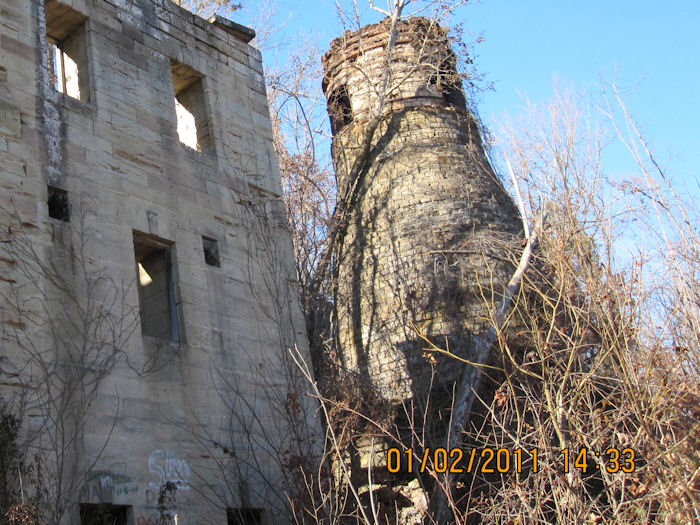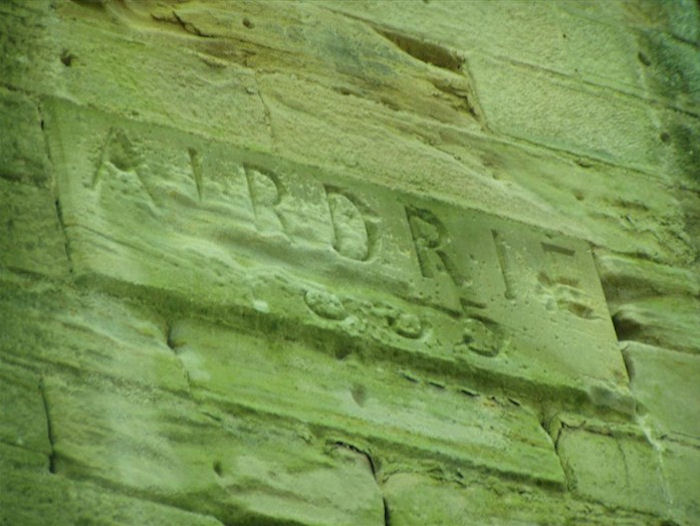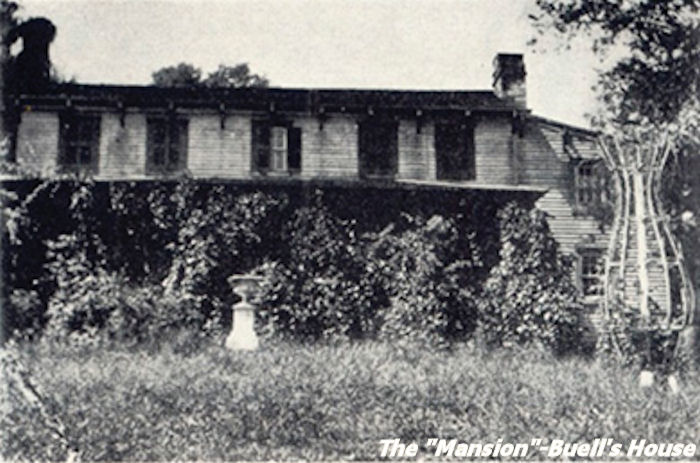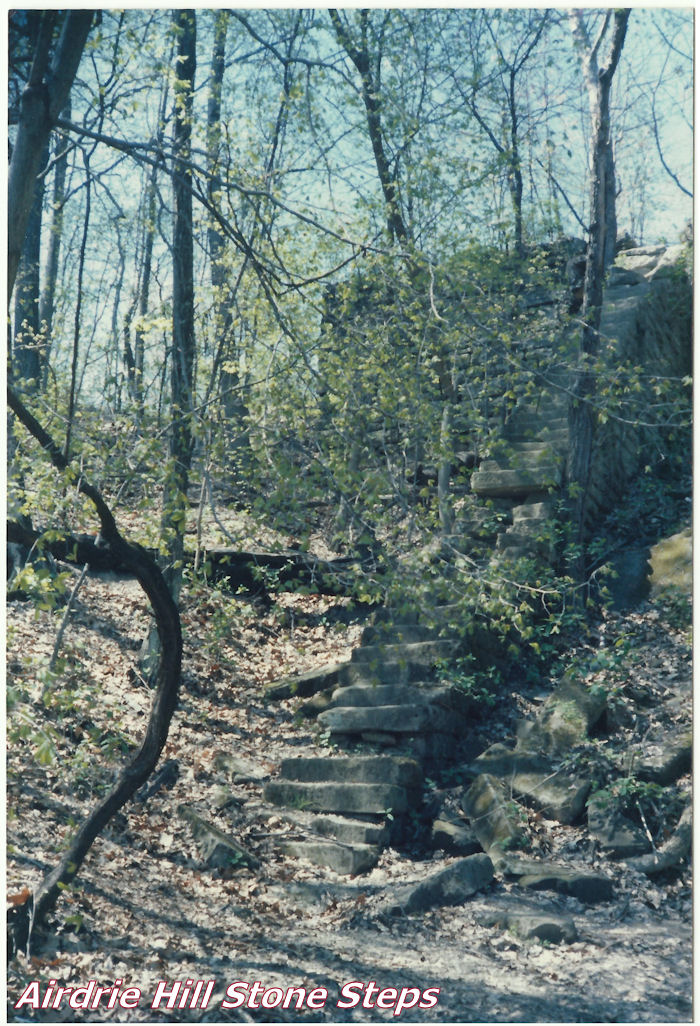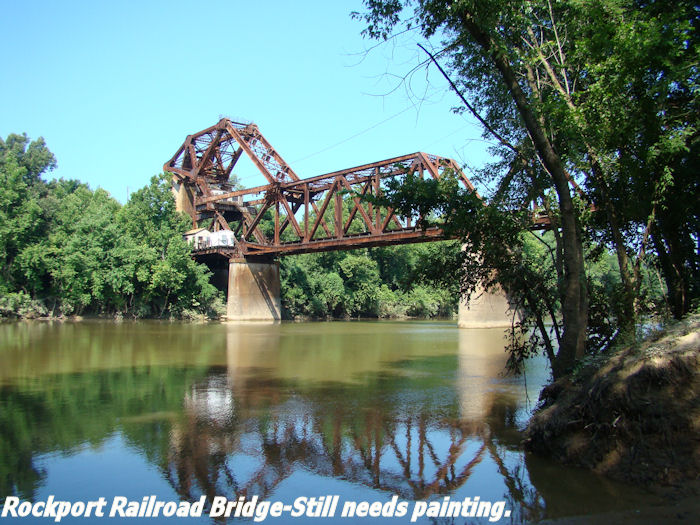Stories And Rumors.
Chapter 4.
In the last three chapters of Airdrie, I have discussed a little of the history of this old relic of a place, a place that has weathered many hot summers, cold winters, the Civil War, flood of 1937, and even the big ice storm of 2009 as well as the aftermath of Hurricane Ike. How much longer this well built production area can remain is written on the wind. Doubt that anyone ever thought that some of it would last this long. Of course, most of the area that was not only a foundry, but a town also, is now gone with no visible traces remaining. One can dream and one can imagine, but to think that this historic place has just sat there since before the Civil War and allowed to deteriorate is beyond the pale. Unreal.
To my knowledge, the stack of the furnace and the equipment house still stand, but the days of the picturesque landmarks are evidently numbered. Only true craftsmen could build such a stack and Stone House that seem to defy storm and sunshine forever. The stack is fifty plus feet high and the sandstone house is three stories in height. A large stone has been placed about half-way up the wall of the Stone House where some craftsmen have etched an inscription, "AIRDRIE, 1865"
At the very top of the Airdrie Hill stood a mansion. Twenty, or so, three bedroom houses were scattered around the lower area of the Hill. Further down, and at the top of the bluff, stone steps led to a point just beyond the Stone House. The stone steps, sixty in number, continue to defy nature and can still be climbed. There is no railing, probably never was, and the journey up or down the steep steps would not be recommended for the faint of heart.
Prior to Mr. Alexander purchasing Airdrie Hill, the land was owned by a Muhlenberg County judge, Alney McLean. His son, William McLean, built the original house that would be occupied by Judge McLean. The house project was started in the latter part of the 1830's. Over time this house would be redesigned and reconstructed until it was considered to become a mansion. Mr. Alexander and General Buell would make this mansion their home after their purchase of the property.
Airdrie Hill, like the Rockport Railroad Bridge, Tucker's Rock, and other prominent places that attracted people would naturally have a lot of stories and tales told about it, some true and others that were not so true. Any place or person worth mentioning eventually will be the bunt of stories, rumors, and downright lies. Airdrie Hill is no different. Guess that any part of this Airdrie Hill series should be taken with a grain of salt, as I have never enjoyed researching material. What I have written and what I continue to write is mostly etched in the old brain and comes from conversing with others while sitting around a campfire, a luncheon table, a small restaurant booth, or other places where people gather.
Of all the extravagant stories told about Airdrie Hill, none would top the tale about the Stone House being used as a prison. Even in an old popular song, Airdrie Prison is mentioned. "To the abandoned old prison down by Airdrie Hill where the air smelled like snakes and we'd shoot with our pistols but empty pop bottles was all we would kill" is a verse from the song "Paradise KY in Muhlenberg County" by John Prine. The story that I am most familiar with is the one where General Buell kept war prisoners in the Stone House during the Civil War. Another is that Mr. Alexander used prisoners in his mine and kept them in the Stone House. Last, but not least, is the rumor that Airdrie Hill Prison was a State Prison and the inmates were held in the Stone House. In reality, and to my knowledge, no prison was ever located at Airdrie. The truth may never be completely known, but the following seems to be the most accurate information about Airdrie Prison. After the Civil War and in the time frame of 1884, a decision was made to make Eddyville Prison a State Penitentiary. First, it would have to be enlarged. The State Government decided to quarry stone from Airdrie Hill, and ship the quarried stone by Green River to Eddyville. The State sent about fifteen prisoners to Airdrie to mine the stone. While there, they were housed in the Stone House. This arrangement only lasted a few weeks as about this time General Lyon discovered some stone suitable for the new Penitentiary near Eddyville. The prisoners were then sent to the new quarry.
My favorite rumor may not be a rumor, but in fact, the truth. The foundry and the Stone House are situated between the river and the top of the bluff. A brick wall separates the foundry and Stone House area from the top of the bluff. A stone stairway was built for access to the foundry. These steep stone steps, sixty in number, make a wide series of steps, wide enough for two people to use together. One tale that I heard at a very young age was that General Buell rode his white horse up the series of steps. As I look at pictures of the steps, my mind tries to fathom a man on horseback riding up the steep steps. As I say, a daring feat, but one that is possible. I will leave this rumor up to the reader to call whether it is fact or fiction. I tend to believe that the General actually rode his white horse up those steps.
During the construction phase of the foundry at Airdrie, a large hotel was built. This hotel was the largest of the wooden structures built by Mr. Alexander. Although occupied extensively during the construction phase of the foundry, it remained unoccupied after Alexander abandoned the iron making process. After years of neglect, this old building was like the song "This Old House" by Rosemary Clooney. In her song a verse stated "This old house lets in the rain, this old house lets in the cold" and this old hotel did the same. Most of the windows became broken and the unpainted wooded structure started reverting back to nature and falling in. Soon, stories and tales arose about ghosts living in the old hotel. It soon became a haunted hotel. The ghost stories continued after the hotel was gone. One particular story started off with a murder scene and ended with a headless ghost being seen. Ghost stories once started only seem to increase in number and intensity. This was the case with Airdrie Hotel. Good ghost stories and good tales to tell around a campfire, but in truth, no one was ever killed in or near the hotel.
Tangible objects are real, but only real for a period of time. Some day they, like all of us, will be gone. Rumors, ghost stories, and tales than can be told to others, whether around a campfire, a home, or other places could last forever. Sadly, Airdrie is going down and the next generation may only find stone and bricks in place of the Stone House, retaining wall, steps, and the stack. A history of Airdrie Hill remains, written in books. The history of Airdrie, fact or fiction, is written in the minds of those interested and handed down in tale from one generation to the next. Hopefully, the memory of Airdrie will continue.
Thanks for looking.
See you......
jerry
:~)
.
